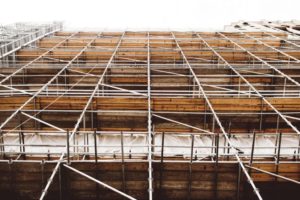 It’s no secret that construction work is dangerous. According to the Occupational Safety and Health Administration (OSHA) 1 in every 5 fatalities in private industry is in the construction sector. According to the Bureau of Labor Statistics, construction site fatalities have been consistently on the rise. In 2015 alone, there was a 4% increase in construction-related deaths. As a business owner, your employees are a vital component to creating an environment where things run smoothly and morale is high. An accident not only impacts the human element of your business, it affects your bottom line in terms of delays, regulatory consequences and potential litigation.
It’s no secret that construction work is dangerous. According to the Occupational Safety and Health Administration (OSHA) 1 in every 5 fatalities in private industry is in the construction sector. According to the Bureau of Labor Statistics, construction site fatalities have been consistently on the rise. In 2015 alone, there was a 4% increase in construction-related deaths. As a business owner, your employees are a vital component to creating an environment where things run smoothly and morale is high. An accident not only impacts the human element of your business, it affects your bottom line in terms of delays, regulatory consequences and potential litigation.
Safety should be a key component of every project, starting on day 1. By making safety your priority, you reduce injuries, save lives and keep your projects on track. Companies that adopt a culture of safety first benefit everyone.
Safety Starts at the Top
Safety begins with the company executives and project leaders. These people should set an example, and hold management responsible for the safety of their employees. Everyone on the job should be trained regarding expectations, planning, and implementation of safety protocols. This applies across the board, from executives to managers, to job foremen and the employees.
The Planning Process
When planning for a project, work to identify the potential dangers involved. This would include everything from laying the foundation to creating the superstructure, to the finishing work. Then identify what proactive steps need to be taken to mitigate these potential hazards.
As the job progresses, the safety issues associated with each phase should be reassessed.
Training
All workers need to be trained on the safety procedures, not just the new employees. Each new project should include a safety orientation, where the safety plans and procedures are reviewed. This should also include disciplinary actions for noncompliance, drug testing policies and fall management procedures when applicable.
Fall Management
Statistics report that 2 out of every 5 construction fatalities are due to falls. Falls top the list for causing fatalities in the construction industry. This is closely followed by “struck-by” accidents, crash injuries and electrocution. OSHA reports that by just eliminating the “fatal four” dangers, 602 lives could be saved annually.
It is recommended that fall prevention safety measures start at a minimum of 6 feet. A detailed fall management plan should be created for every project that has a fall risk.
Learn from Near Misses and Accidents
Learning the root cause of a near miss or accident enables the company to take preventative measures in the future. Each incident should be scrutinized to determine what went wrong and what can be done in the future to mitigate the danger.
Collaboration
Companies who take their safety seriously adopt a collaborative approach by working with their insurers and risk management professionals from the beginning.
Building a solid safety culture takes time, attention and resources. However, the benefits pay off exponentially. It promotes a positive company reputation, lowers project costs and makes the company more attractive to employees and clients.
